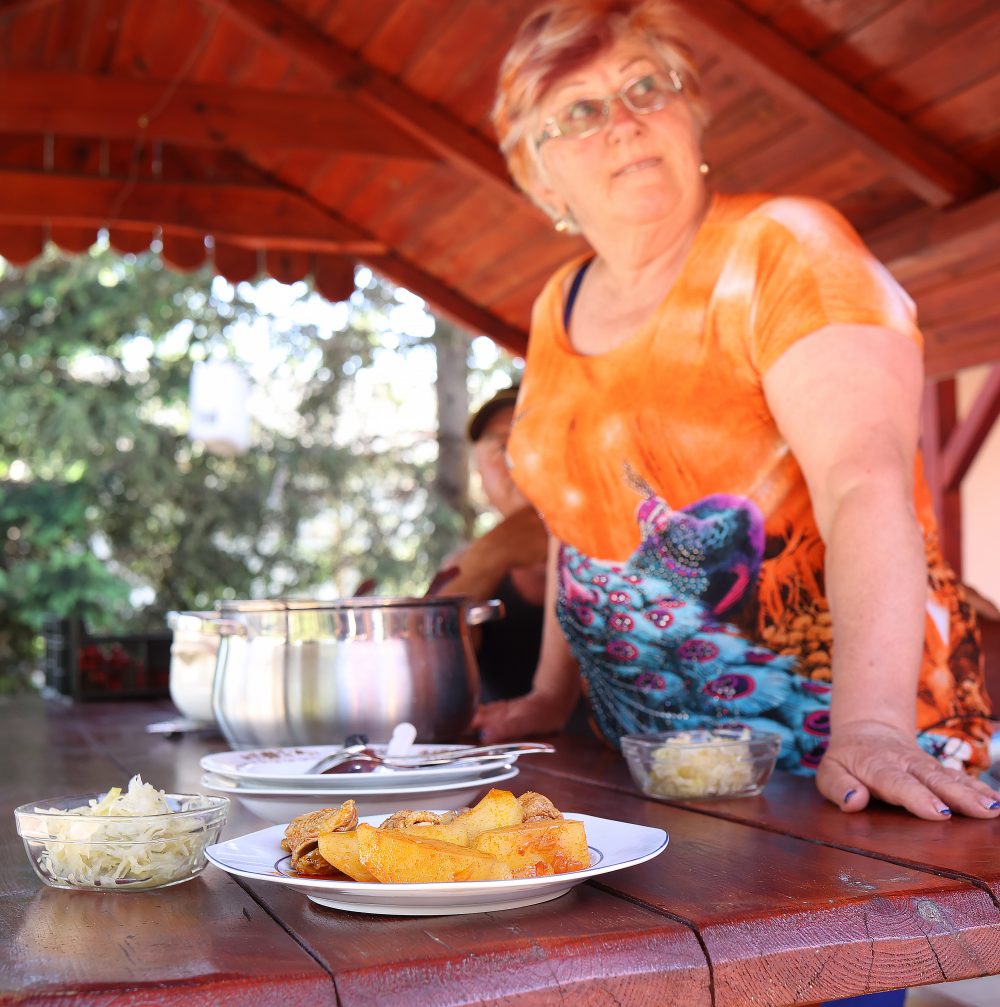Paprika’s role in Hungarian cooking is nonnegotiable. It is not a seasoning. Of this, Piroska Tanácsné is adamant.
Let’s say that again—because Tanácsné certainly did. Many times. In Hungary, paprika isn’t a seasoning. It is the reason.
The cuisine here evolved as it did not because its dishes are delicious when doused with the country’s signature fire-red spice made from dried and ground peppers. Though certainly they are. It evolved almost entirely to showcase and serve as a vehicle for that spice in all its peppery, sweet and smoky glory. And it uses it in volumes mind-blowingly copious.
“Paprika is very important. It’s in every dish of Hungarian cuisine. It’s basically the flavor of Hungarian cuisine,” Tanácsné explains while giving a tour of the 150-year-old farm she and her husband, József Tanács, run in Zákányszék, a remote village of some 2,500 people in southern Hungary.

In Piroska Tanácsné’s cooking, the paprika is the real star of every meal.
“For example, there are paprika potatoes,” she continues, referring to a dish known locally as paprikás kumpli, one of the reasons for my visit to her sprawling patch of peas, potatoes, strawberries, melons and apricots. “It is very easy. It is potatoes, onions and paprika. It tastes a little of potato, but a lot of paprika.”
Oddly, paprika is a relative newcomer to Hungarian cuisine. At least by the metrics of European timetables. It was introduced to Hungary by the Turks only some 400 years ago. Since then, it has firmly edged out all other seasonings and almost always is partnered with its culinary bandmates—onions and some sort of fat.
Of the many dishes starring paprika, I was particularly intrigued by paprikás kumpli, which uses nothing but a short simmer to transform that classic Hungarian trio of paprika, fat and onions into a sauce thick and rich and—for the simple starchy potato cooked in it—deeply transformative. Tanácsné offered to teach me her version.
The lesson is simple. Tanács retrieves a basket of home-grown red potatoes from the barn, then peels and chunks them with a practiced twist of his paring knife. His wife combines them with onions, pork fat, water and a full ¼ cup of sweet paprika. This simmers down for 30 minutes, the sauce reducing to a thick coating as the potatoes become tender.
Some cooks add additional seasonings, Tanács explains. But he and his wife prefer to let the paprika shine. “Good things are always simple,” he says. I have to agree. The result is boldly and warmly seasoned, the sort of dish that nudges a handful of flavors into so much more than the parts suggest.
The potatoes are delicious, of course. But—true to Tanácsné’s word—the paprika is the star.








